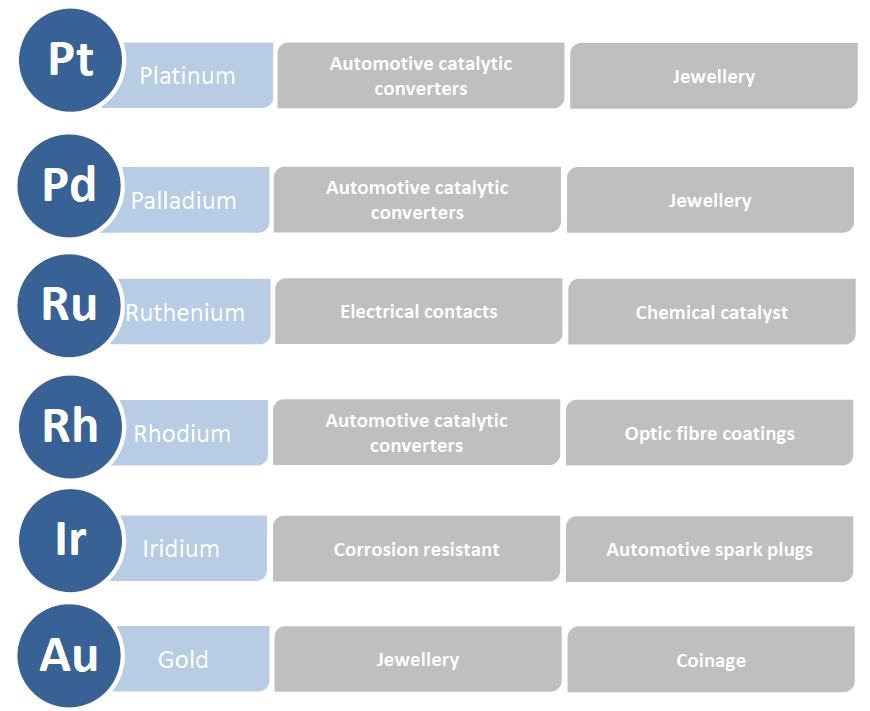Our products
PGMs
The ore from the Tharisa Mine produces a PGM basket containing platinum, palladium, ruthenium, rhodium, iridium and gold.
PGMs or platinum group metals are a group of metals platinum, palladium, rhodium, iridium, ruthenium and osmium. That have similar physical and chemical properties and tend to occur together in the same mineral deposit. The usefulness of PGMs is determined by their particular chemical and physical properties. Certain of these properties are shared by other metals, but it is the unique combination of properties that defines the PGMs in their end markets. PGMs have high catalytic activity, high thermal resistance, are chemically inert, biocompatible and are hard but malleable for forming into shapes. Platinum, palladium and rhodium are used in high volumes applications, whileruthenium and iridium have niche high technology applications.
PRIMARY USES OF PGMS GLOBALLY

| Pt |
|---|
| Platinum |
| Automotive catalytic converters |
| Jewellery |
| Pd |
| Palladium |
| Automotive catalytic converters |
| Jewellery |
| Ru |
| Ruthenium |
| Electrical contacts |
| Chemical catalyst |
| Rh |
| Rhodium |
| Automotive catalytic converters |
| Optic fibre coatings |
| Ir |
| Iridium |
| Corrosion resistant |
| Automotive spark plugs |
| Au |
| Gold |
| Jewellery |
| Coinage |
CHROME
Given the size of its resource, the Group is well positioned to continue supplying into and benefiting from the projected growth in demand for chrome for a long time.
Chrome products are produced from chromite containing ores, such as the Middle Group Chromitite layers of the Bushveld Complex. The key drivers for the production of chrome are the ferrochrome and stainless steel industries. Some 85% of all chrome produced is converted into ferrochrome by a smelting process. Ferrochrome is a raw material used in the manufacturing of stainless steel. Chrome is also used in the chemical and foundry industry, this is houses small in comparison to the stainless steel industry.
CRU estimates that 75% of global chrome resources are in South Africa and accordingly South Africa is the largest chrome concentrate producer. South Africa, Turkey, Kazakhstan and India are also chrome producing countries and together these four countires account for over 70% of global production. Chrome ore production is expected to have a long-term stable demand, as a result of the demand for stainless steel.
-
- Cr2O3–30% to 45%
- SiO2-<1%
- Chrome is the key ingredient for stainless steel
92% -
- Cr2O3–>46%
- SiO2-<1%
- High thermal conductivity and low thermal expansion
- Mould for metal castings
3% -
- Cr2O3–45% to 47%
- SiO2-<1.2%
- Chrome chemicals for metal plating
- Leather tanning
3% -
- Cr2O3–>46%
- SiO2-<1.2%
- 98% < 2mm
- Refractory bricks for furnace linings
2%
Our Business
- Tharisa Mine
- Arxo Metals
- Arxo Resources
- Arxo Logistics
- Our process
- Our products
- Salene Chrome Zimbabwe
- Karo Mining Holdings
- Group structure
